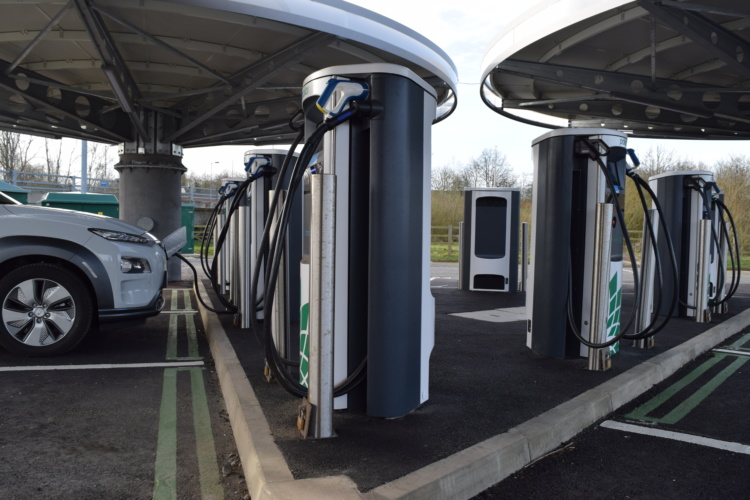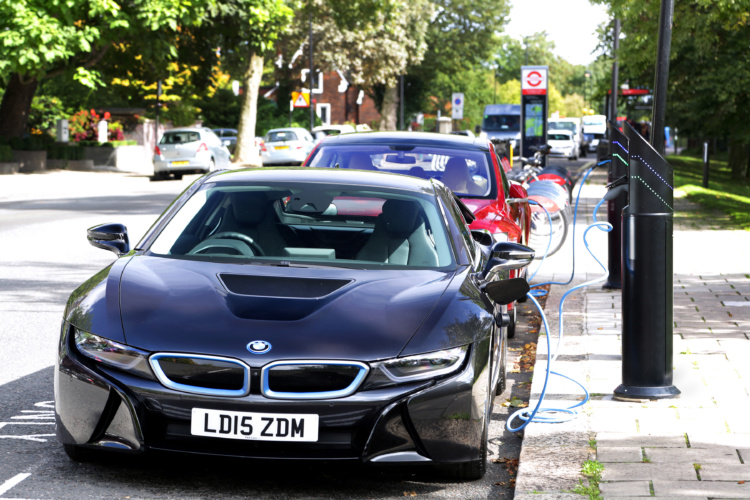
With car makers and government on a mission to bring low-carbon motoring to the masses, the number of electric vehicles on the roads is set to increase rapidly. But is current charging infrastructure fit for purpose? And how will this infrastructure evolve to meet future demand? The Engineer sought the opinions of some of the leading experts in this rapidly growing area of the automotive sector.
Nottingham to host electric taxi charging trial
New battery could deliver 1000km on single charge
Comment: the future of mobility
Meet the experts
- Professor Richard McMahon – WMG, University of Warwick
- Matteo de Renzi CEO, BP Chargemaster
- Colin Heron - Managing Director, Zero Carbon Futures
- Dr. Doron Myersdorf - CEO, StoreDot
Is lack of charging infrastructure hampering the uptake of electric vehicles?
 CH: There are no studies that correlate the simple number of charge posts with EV registrations. The early adopters are mainly people who live in urban centres and have off street parking. The lack of plentiful affordable EVs is what is hampering the take up of EV. The principle reason for lack of vehicles is a shortage of batteries. Europe has hardly increased installed capacity over the last 6 years and is only now installing large capacity cell manufacturing plants.
CH: There are no studies that correlate the simple number of charge posts with EV registrations. The early adopters are mainly people who live in urban centres and have off street parking. The lack of plentiful affordable EVs is what is hampering the take up of EV. The principle reason for lack of vehicles is a shortage of batteries. Europe has hardly increased installed capacity over the last 6 years and is only now installing large capacity cell manufacturing plants.
MdR: The reality is that there is plenty of capacity in the existing public charging infrastructure in the UK, and there is more being built virtually every day. One thing we need to do better is increase the visibility of the charging infrastructure that is already installed and will be installed in the future. A key benefit of our ultra-fast chargers on BP forecourts is that they will be seen by drivers of other vehicles while refuelling, which will give them greater confidence that the infrastructure is there and it’s in convenient, familiar places.
DM: Based on current levels of EV ownership, the existing charging infrastructure is sufficient. However, with EV ownership predicted to increase drastically within the next few years, it is imperative that adequate infrastructure is put in place to meet accelerating demand.
Where is the greatest need for charging infrastructure?
 RM: All sorts of forms of charging will be needed to reflect the diverse modes of driving. Home and work charging is great for those who have a home parking place. For those who don’t, the charging hub is one model; supermarkets, shopping centres and the like are also in the game.
RM: All sorts of forms of charging will be needed to reflect the diverse modes of driving. Home and work charging is great for those who have a home parking place. For those who don’t, the charging hub is one model; supermarkets, shopping centres and the like are also in the game.
MdR: Ultimately, we will need the right type of charging infrastructure in the right places. It won’t be appropriate, necessary or possible to lay down 150kW chargers absolutely everywhere, but it’s also important that we offer these higher speeds and don’t assume that everyone will be happy or able to charge at slower speeds.
DM: Having multiple charging options (unlike today when filling a gas tank at a garage is the only way) is key for allowing drivers the flexibility they need. Outside of cities, where driving is characterized by long distances, drivers will have to rely on a combination of home charging and public infrastructure. In this scenario, having access to ultra-fast charging facilities is imperative.
What needs to happen to drive greater levels of installation?
DM: As technological developments such as ultra-fast charging continue to overcome barriers to EV adoption, so governments around the world will have to ensure policy making facilitates rapid deployment of the supporting infrastructure. Meanwhile, simplifying regulations and installation licensing processes reduces overall costs and removes uncertainty for developers and business owners. Charging stations, especially those offering high power, require high capital investment. Therefore, the main goal must be to ensure that private investors in infrastructure projects will maintain a high level of return on their investments.

RM: The current players in charging infrastructure have invested a lot of money into the fledgling networks, but the networks are mostly (so far) unprofitable. It’s risky because it’s hard to predict peoples’ charging behaviour patterns on 1 per cent of early adopters. Sure charging will be needed, but where and at what charging rate remain unknown to a certain degree. It’s probably a cart and horse problem – the limited amount of electric vehicles means it’s harder for systems to make money, therefore limiting investment in the area at this stage.
CH: The UK has no overall installation plan, and services such as ZAP MAP only find out what has been installed when it is switched on. We have a true post code lottery. There is no model available which calculates how many chargers by type are required per number of registrations (year and cumulative), as the variables are currently too complicated. The current network, with the exception of isolated pieces of equipment, is a financial liability due to the low utilisation. The more chargers that go in the financial viability drops even more, which manifests itself in lack of maintenance and frustration of the current users. The core problem is the uncontrolled installation of charge points where land becomes available and where there is an acceptable connection cost or grant funding.
What is the current state of the art?
 DM Interest in EVs for heavy-duty applications and demand for ultra-fast charging are just two of the factors driving rapid development of charging technology. Ultra-fast charging requires high power stations, with the result that we already have 350 kW stations in various stages of implementation. At the same time, new standards are now being developed for even higher-power chargers – so expect to see mega-chargers capable of charging at one megawatt (MW) or more in the not too distant future. Adopting a more strategic approach, infrastructure companies will need to find a way to analyse large amounts of usage data in order to pinpoint and optimise ideal locations for charging stations, and to help standardise their technical specifications. In addition, operators will need to implement ‘smart grid’ algorithms and intelligent metering systems to balance peak usage and optimize the overall cost of ownership of the entire infrastructure.
DM Interest in EVs for heavy-duty applications and demand for ultra-fast charging are just two of the factors driving rapid development of charging technology. Ultra-fast charging requires high power stations, with the result that we already have 350 kW stations in various stages of implementation. At the same time, new standards are now being developed for even higher-power chargers – so expect to see mega-chargers capable of charging at one megawatt (MW) or more in the not too distant future. Adopting a more strategic approach, infrastructure companies will need to find a way to analyse large amounts of usage data in order to pinpoint and optimise ideal locations for charging stations, and to help standardise their technical specifications. In addition, operators will need to implement ‘smart grid’ algorithms and intelligent metering systems to balance peak usage and optimize the overall cost of ownership of the entire infrastructure.
CH: Charging technology is sophisticated in terms of the power electronics to talk to a car and deliver power. However, they are also quite dumb as it is the car that determines how the battery is charged. It is the battery chemistry and battery design that determine how long it takes to charge.
What technologies do you see coming further down the line that will make it quicker and easier to charge EV batteries?
 MdR: We would like to see more OEMs bringing vehicles to market that are capable of genuine ultra-fast charging – not just peaking at 100kW or even 150kW for a minute or two. In terms of inductive charging, we have trialled this before and even retrofitted it to previous company vehicles, but we are not seeing a huge amount of appetite for it from the OEMs.
MdR: We would like to see more OEMs bringing vehicles to market that are capable of genuine ultra-fast charging – not just peaking at 100kW or even 150kW for a minute or two. In terms of inductive charging, we have trialled this before and even retrofitted it to previous company vehicles, but we are not seeing a huge amount of appetite for it from the OEMs.
CH: Inductive charging as you drive (dynamic) will, I believe, never happen due to the cost involved in basically digging up our main roads and installing equipment, as well as installing a power supply. Static induction charging on peoples’ drives is a possibility. Outside on the street is expensive and requires dedicated charging bays.
With regard to battery technology, the current lithium ion format will get better by about 30 per cent but there will be no step change for 6 to 8 years. The current Holy Grail is solid state, which is not productionised or costed.
DM: Innovative battery technology, in addition to battery cost reduction, will play a crucial role in making EV charging both quicker and easier. With range anxiety a major inhibitor to EV adoption, the ability to charge a battery quickly whilst on the move is a critical factor to overcoming this challenge.
RM: I don’t see a disruptive battery technology in the near future. If it existed, it would probably be obvious by now. However, batteries will get better but how that is cashed in is moot – smaller or cheaper packs hence cars, or longer range or ability to take higher charge or longer life?
Static wireless charging has some attractive use advantages – no cable to handle, no getting out in the rain, personal security issues and accessibility for the disabled are all valid considerations. The initial steps are being taken to demonstration, but the OEMs are still on the sidelines.




Swiss geoengineering start-up targets methane removal
No mention whatsoever about the effect of increased methane levels/iron chloride in the ocean on the pH and chemical properties of the ocean - are we...